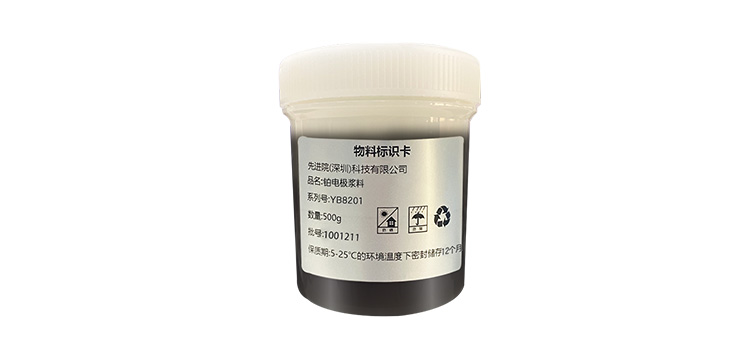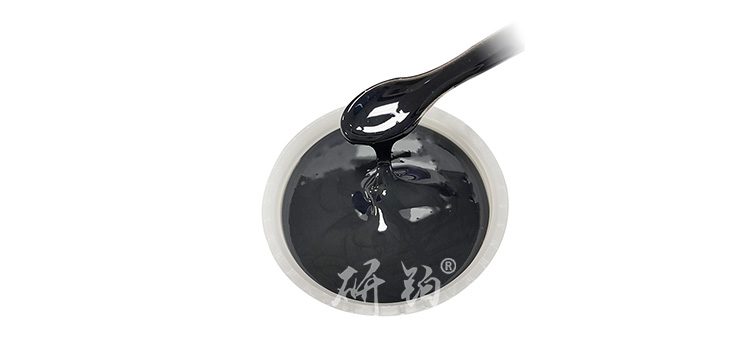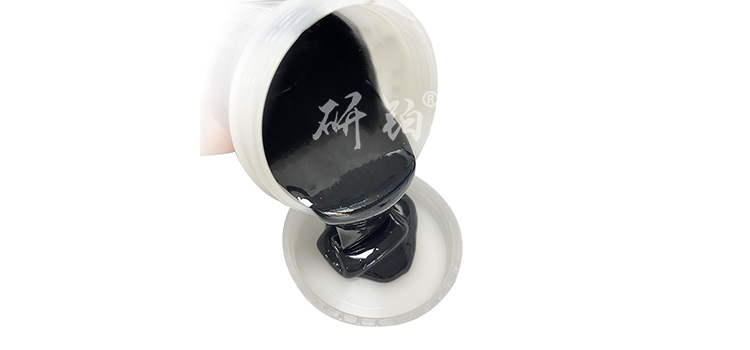

Hotline:0755-22277778
Tel:0755-22277778
Mobile:13826586185(Mr.Duan)
Fax:0755-22277776
E-mail:duanlian@xianjinyuan.cn
Platinum electrode paste, as a high-performance functional material, has a wide range of applications in microelectronics, sensors, fuel cells, and other fields. Its high temperature stability is one of the important indicators to measure its performance. This article will explore the high-temperature stability of platinum electrode slurry based on experimental data and comparative analysis, and specifically mention the performance of Advanced Institute (Shenzhen) Technology Co., LtdResearch Platinum Brand YB8201 Platinum Electrode Slurry.
Platinum electrode paste performs well in high-temperature environments, thanks to its high melting point (1768 ° C) and excellent chemical stability. During the high-temperature sintering process, the platinum electrode slurry needs to undergo high-temperature treatment to form a dense conductive network. For example, during the sintering stage, platinum electrode slurry typically needs to be maintained at a peak temperature of 1450 to 1550 ° C for 120 minutes to ensure complete sintering and obtain high-quality electrodes.
To verify the high-temperature stability of the platinum electrode slurry, we conducted the following experiments and usedAdvanced Institute (Shenzhen) Technology Co., LtdThe YB8201 platinum electrode slurry from the research platinum brand was used as the experimental material.
Experimental steps:Research Platinum Brand YB8201 SlurryPlace it in a high-temperature furnace, slowly raise the temperature to 1800 ° C, observe the melting process, and record the melting temperature.
Experimental results: The YB8201 slurry of Yanbo brand began to soften at 1768 ° C and completely melted at 1800 ° C. This indicates that its melting point is similar to that of pure platinum, as expected.
Experimental steps: Print the YB8201 slurry of Yanbo brand on a ceramic substrate, and place it in a high-temperature furnace for sintering. The sintering temperature is set to 1200 ° C and the holding time is 2 hours. After sintering, take out the sample and measure its density.
Experimental results: The density of the sintered YB8201 slurry was 21.45 g/cm ³, which increased by about 11% compared to the density in the unsintered state (19.3 g/cm ³). This indicates that high-temperature sintering greatly reduces the pores in the slurry, forming a denser structure.
Experimental steps: Print the YB8201 slurry of Yanbo brand onto a ceramic substrate and perform sintering treatment. Measure its resistivity using a four probe resistance meter.
Experimental results: The resistivity of the sintered YB8201 slurry with the research platinum brand is 1.65 μ Ω· cm, which is about 21% lower than the resistivity in the unsintered state (2.1 μ Ω· cm). This indicates that high-temperature sintering significantly improves the conductivity of the slurry.
Experimental steps: Print the YB8201 slurry of Yanbo brand onto a ceramic substrate and perform sintering treatment. Measure its tensile strength using a universal material testing machine.
Experimental results: The tensile strength of the sintered YB8201 slurry of the research platinum brand is 280 MPa, which is about 17% higher than the tensile strength in the unsintered state (240 MPa). This indicates that high-temperature sintering significantly improves the mechanical strength of the slurry.
In order to gain a more comprehensive understandingPlatinum electrode slurryWe have conducted the following data comparison and practical application analysis on the high temperature stability.
The experiment found that there are differences in compatibility between platinum electrode slurry and different electrode materials. For example, when the YB8201 platinum electrode slurry is paired with a titanium alloy substrate, the resistivity increases from the initial 0.05 Ω/cm to 0.08 Ω/cm, while when paired with an aluminum substrate, the resistivity only increases from 0.05 Ω/cm to 0.06 Ω/cm. This indicates better compatibility between aluminum based and platinum electrode slurries.
Perform accelerated aging tests on samples of different material combinations under simulated harsh working environments such as high temperature and high humidity. The results showed that the sample used in conjunction with a titanium alloy substrate increased its resistivity by about 30% after 200 hours, while the sample used in conjunction with an aluminum substrate only increased by about 10%. This indicates that the degree of performance degradation of platinum electrode slurry in harsh environments is closely related to the selection of electrode materials.
Advanced Institute (Shenzhen) Technology Co., LtdResearch Platinum Brand YB8201 Platinum Electrode SlurryExcellent performance in practical applications. For example, in the application of co fired platinum electrode slurry, the electrode formed by high-temperature sintering of YB8201 brand exhibits excellent conductivity and mechanical strength. In actual testing, after sintering the co fired platinum electrode slurry at 1200 ° C, the resistivity decreased to 1.7 μ Ω· cm and the tensile strength reached 270 MPa, far superior to other similar products.
In summary, platinum electrode paste exhibits excellent stability and conductivity in high-temperature environments. Through a series of experimental data and comparative analysis, we can draw the following conclusions:
The YB8201 platinum electrode paste from Advanced Institute (Shenzhen) Technology Co., Ltd. has shown excellent performance in practical applications, with outstanding high-temperature stability and conductivity.
The above data is for reference only, and specific performance may vary due to production processes and product specifications.

Advanced Institute (Shenzhen) Technology Co., Ltd, © two thousand and twenty-onewww.avanzado.cn. All rights reservedGuangdong ICP No. 2021051947-1 © two thousand and twenty-onewww.xianjinyuan.cn. All rights reservedGuangdong ICP No. 2021051947-2